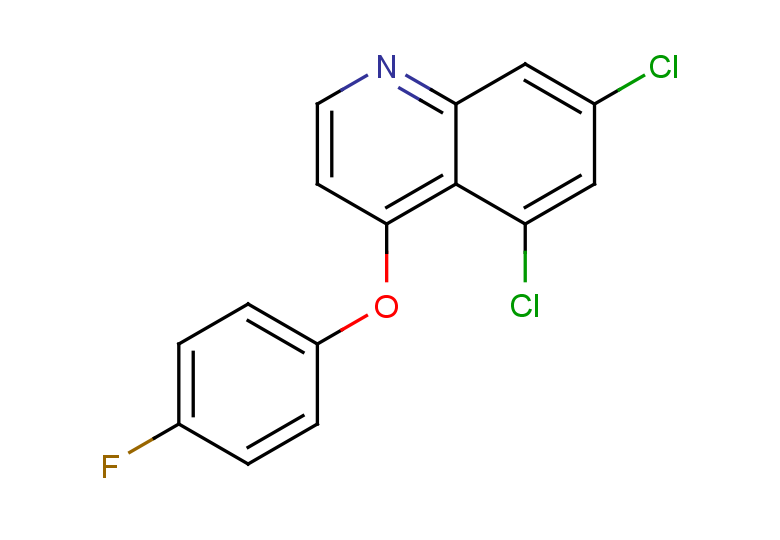Quinoxyfen
| Code | Size | Price |
|---|
| TAR-T20672-10mg | 10mg | £97.00 | |||||||||||||||||||||||||||||||||||||||||||||||||||||||||||||||||||||||||||||||||||||||||||||||||
| Special offer! Add £1 to your order to get a TargetMol CCK-8 Kit. Read more here. | |||||||||||||||||||||||||||||||||||||||||||||||||||||||||||||||||||||||||||||||||||||||||||||||||||
Quantity:
| TAR-T20672-25mg | 25mg | £117.00 | |||||||||||||||||||||||||||||||||||||||||||||||||||||||||||||||||||||||||||||||||||||||||||||||||
| Special offer! Add £1 to your order to get a TargetMol CCK-8 Kit. Read more here. | |||||||||||||||||||||||||||||||||||||||||||||||||||||||||||||||||||||||||||||||||||||||||||||||||||
Quantity:
| TAR-T20672-50mg | 50mg | £144.00 | |||||||||||||||||||||||||||||||||||||||||||||||||||||||||||||||||||||||||||||||||||||||||||||||||
| Special offer! Add £1 to your order to get a TargetMol CCK-8 Kit. Read more here. | |||||||||||||||||||||||||||||||||||||||||||||||||||||||||||||||||||||||||||||||||||||||||||||||||||
Quantity:
| TAR-T20672-100mg | 100mg | £199.00 | |||||||||||||||||||||||||||||||||||||||||||||||||||||||||||||||||||||||||||||||||||||||||||||||||
| Special offer! Add £1 to your order to get a TargetMol CCK-8 Kit. Read more here. | |||||||||||||||||||||||||||||||||||||||||||||||||||||||||||||||||||||||||||||||||||||||||||||||||||
Quantity:
| TAR-T20672-500mg | 500mg | £484.00 | |||||||||||||||||||||||||||||||||||||||||||||||||||||||||||||||||||||||||||||||||||||||||||||||||
| Special offer! Add £1 to your order to get a TargetMol CCK-8 Kit. Read more here. | |||||||||||||||||||||||||||||||||||||||||||||||||||||||||||||||||||||||||||||||||||||||||||||||||||
Quantity:
Prices exclude any Taxes / VAT
Overview
Regulatory Status: RUO
Shipping:
cool pack
Storage:
-20℃
Images
Documents
Further Information
Bioactivity:
Quinoxyfen, a fungicide of the phenoxyquinoline class, is used to control powdery mildew, Uncinula necator (Schw.) Burr.
CAS:
124495-18-7
Formula:
C15H8Cl2FNO
Molecular Weight:
308.13
Pathway:
Microbiology/Virology
Purity:
0.98
SMILES:
Fc1ccc(Oc2ccnc3cc(Cl)cc(Cl)c23)cc1
Target:
Antifungal
References
1. Fragoulis G, Merli A, Reeves G, Meregalli G, Stenberg K, Tanaka T, Capri E. A Bayesian approach to assessing the uncertainty in estimating bioconcentration factors in earthworms--the example of quinoxyfen. Pest Manag Sci. 2011 Jun;67(6):656-64. doi: 10.1002/ps.2105. Epub 2011 Feb 18. PubMed PMID: 21337673.
2. Chowdhury MM, Chakrabarti A, Prais L, Foulds IS. Occupational allergic contact dermatitis caused by 5,7-dichloro-4-(4-fluorophenoxy)quinoline (quinoxyfen). Contact Dermatitis. 2001 Aug;45(2):119-20. PubMed PMID: 11553131.
3. Zubrod JP, Englert D, Feckler A, Koksharova N, Konschak M, Bundschuh R, Schnetzer N, Englert K, Schulz R, Bundschuh M. Does the current fungicide risk assessment provide sufficient protection for key drivers in aquatic ecosystem functioning? Environ Sci Technol. 2015 Jan 20;49(2):1173-81. PubMed PMID: 25517729.
4. Lee S, Gustafson G, Skamnioti P, Baloch R, Gurr S. Host perception and signal transduction studies in wild-type Blumeria graminis f. sp. hordei and a quinoxyfen-resistant mutant implicate quinoxyfen in the inhibition of serine esterase activity. Pest Manag Sci. 2008 May;64(5):544-55. doi: 10.1002/ps.1538. PubMed PMID: 18229890.



